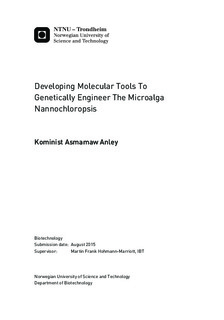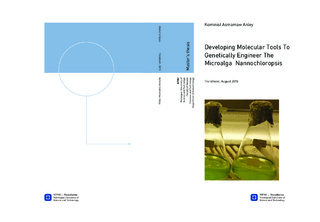| dc.description.abstract | The main objective of this thesis was to develop an efficient transformation protocol for Nannochloropsis oceanica CCMP1779 by biolistic transformation using the linearized pSELECT100 plasmid which confers hygromycin B resistance. In addition the toxicity of several antibiotics for different Nannochloropsis species was determined.
Nannochloropsis is the genus of unicellular photosynthetic microalgae in the class of Eustigmatophyceae, which have industrial significance due to their production of high amounts of lipids.
The biolistic genetic transformation system of Nannochloropsis oceanica CCMP1779 is still not well established. In the current study, transformation of N. oceanica CCMP1779 was achieved by particle bombardment with the PDS-1000/He instrument using plasmid coated onto gold and tungsten microparticles. Results show that the type of microparticle is an important factor for the efficiency of transformation. N. oceanica is transformed more efficiently with 0.6 µm gold particles than with 0.7 µm tungsten particles. Using the optimized transformation condition, the transformation efficiency was 5-25 transformants per 1.3×109 recipient cells, which is more efficient comparing with those reported in this species transformation studies.
Antibiotics are chemical substances that have antagonistic effects on the growth of other microorganisms. This study investigated the growth inhibiting effects of eleven antibiotics on three Nannochloropsis species: Nannochloropsis gaditana, Nannochloropsis limnetica and Nannochloropsis oceanica. Ampicillin and Kanamycin were not toxic at the tested concentrations (20 to 200 µg/mL) to the three species, whereas Zeocin and Cycloheximide were the most toxic to the three Nannochloropsis species (Resulted more than 65% growth reduction at 1 µg/mL). Chloramphenicol, Zeocin, Hygromycin B, Cycloheximide, and G418 neomycin had a promise as selective reagent for the three Nannochloropsis species. | |

